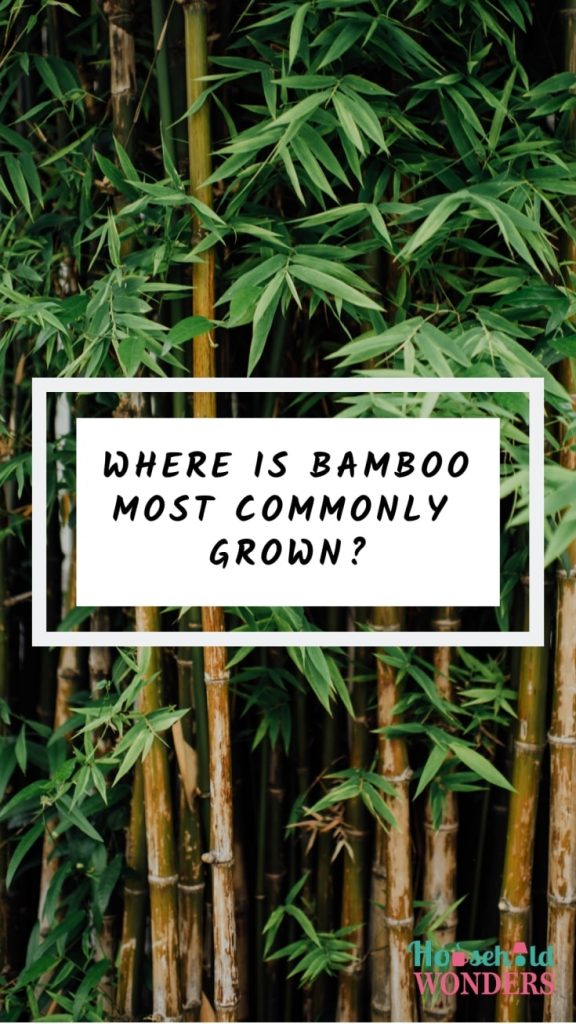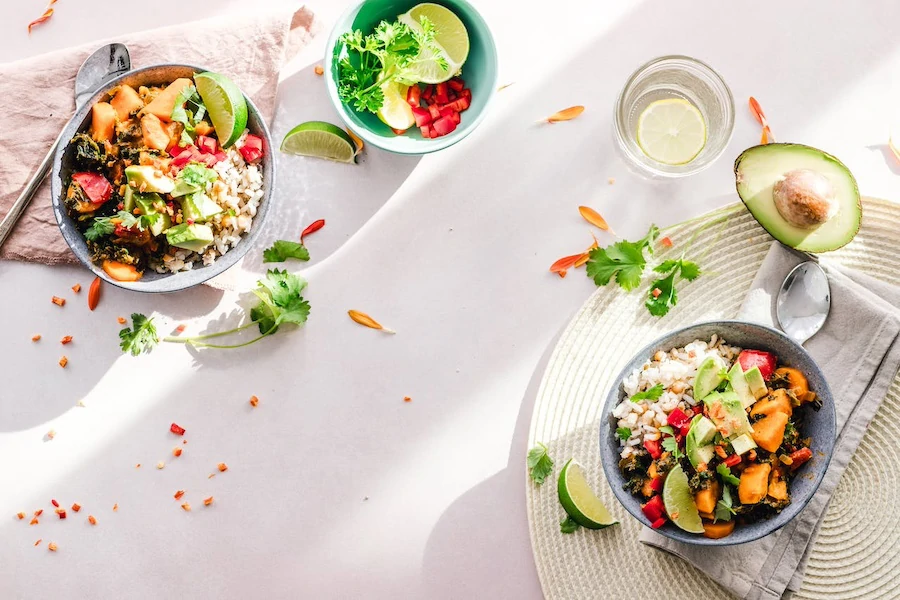
I’ve been replacing a lot of my household items and kitchenware with bamboo products over the years to bring about a more eco-friendly environment in our home. I know that bamboo is a highly renewable, eco-friendly material compared to other materials like plastic and wood, but I’ve never been sure where bamboo is most commonly grown.
So where is bamboo most commonly grown? Bamboo is most commonly grown in Asia, Australia, North America, South America, and Africa. The region where most bamboo is grown worldwide for commercial purposes is in Southeast Asia, especially in China.
Now, where bamboo is grown most commonly, is important to know because we know that it’s one of the most renewable resources on our planet. If it was possible to grow bamboo in other regions of the world, we’d definitely improve the quality of our air, soil, and water.
Bamboo is one of the most prolific plants on the planet and is widely known nowadays as “Green Gold”. The number of species of bamboo totals to almost 1,500 worldwide, while only about 100 of those species are used for commercial purposes. It’s common to believe that bamboo only grows in Asian countries where pandas live, but, in reality, bamboo can grow in almost any region of the world.
The continents that grow the most bamboo across the world are Asia, Australia, North America, South America, and Africa. While most bamboo is grown in Asia, especially Southeast Asia, that doesn’t mean it’s lacking in other regions. It didn’t seem so strange to me at first realizing that bamboo grows quite abundantly in non-Asian countries, but it was a surprise that none if grown in Europe. I wasn’t too surprised about none being in Antarctica though!
In North America, there used to be enormous areas of the Southeast United States completely covered in bamboo. As a matter of fact, over 5 million acres in the Southeast United States were taken over by swaths of bamboo until local farmer removed them to make way for local cash crops. Even though bamboo can be used as a source of food and building material, the other crops must’ve been more useful. Who would’ve thought!
In Southeast Asia, bamboo has for centuries been a staple material used throughout their civilization. It was discovered that it was more common to build houses, household items, bamboo clothes, and general infrastructure with bamboo as opposed to stone or brick due to the mass abundance of the material.
To this day, Southeast Asia has the largest amount of bamboo growth and readily uses it to produce retail products. As a matter of fact, the likeliness that any bamboo products you’ve purchased were manufactured in Southeast Asia, in particular China, is very high.
Bamboo is also heavily present in Japan and has been used for centuries in the same way that other Asian countries used it. One amazing fact about bamboo in Japan is that it was the only plant to have survived in the atomic bombings in Hiroshima back in 1945.
The destruction of all living things was expansive, but the local bamboo was able to resist the atomic blast. While the bamboo has since been removed from the area due to safety reasons, you can still find remnants of the actual plants in Japanese museums.
Best Growing Conditions for Bamboo
As an extremely versatile plant, bamboo has the ability to grow and thrive in almost any environment the planet can throw at it. It’s actually not considered a tree, but instead, a type of grass that once planted, allows bamboo to grow and spread rapidly similar to a weed. This is one of the main reasons we see bamboo all over the world.
The main outcome of finding the best growing conditions for bamboo is the resulting growth rate. It’s been recorded that some bamboo species under the right circumstances can grow 1 foot (30 centimeters) in only one day. Actually, there’s a Guinness World Record for the fastest growing plant on earth that’s gone to a particular bamboo species that can grow up to 35 inches (91 centimeters) per day. That’s 1.5 inches (4 centimeters) per hour!
The best conditions for bamboo to grow is generally in tropical climates with a good amount of humidity. This should be of no surprise as we find most bamboo growing in these types of climates anyway, like Southeast Asia, South America, the Southeast United States, Sub-Saharan Africa, and Northern Australia. While bamboo can thrive in environments where water is scarce, it definitely helps to have it around.
Again, one of the best characteristics of bamboo is that it can grow almost anywhere. This is great for several reasons. One, we can have one of the most eco-friendly, sustainable, and renewable plants almost anywhere in the world. This is great for our planet! Second, it actually helps repair and rebuild eroded soil so it can be used again for other purposes.
How Big a Bamboo Plant Can Get
Bamboo has the ability to reach its mature height at about the one year mark and it can reach anywhere between a few inches to up to 100 feet (30 meters). There have been records of a certain species of bamboo growing to a max height of 130 feet (40 meters). That’s huge!
Since bamboo isn’t a tree and instead is a grass, it actually has a maximum height and width that it reaches pretty quickly. As a matter of fact, most species of bamboo stop growing after about one year and can have a 1-foot width (30 centimeters). That’s the main reason people often mistake it for a tree since, as a grass, it can actually become quite thick.
While bamboo can grow quickly, the maximum width and height really depend on the species and local growing conditions. As I mentioned before, it’s really common for bamboo to thrive mainly in more tropical locations, so if you don’t live in an area like that, expect to not reach very tall heights and thick bases.
Growing Bamboo at Home
The fact that bamboo can grow so quickly and is easy to maintain makes it a perfect plant to use throughout your home. Whether you want to spruce up the interior of your living room or start growing them in your backyard, bamboo lets you do it all.
I started growing bamboo in our house in little pots some time ago and over a short amount of time, they’ve grown to their full size. They look great inside because they give off a kind of natural, green look that creates a setting of relaxation, warmth, and all-natural beauty.
Having plants in general around the house is great because it can look amazing and you’re increasing the amount of oxygen in your home! As a matter of fact, bamboo produces 35% more oxygen than other plants.
Another popular place to grow bamboo in your home is in your backyard. The ability of bamboo to grow so quickly makes it easier to decide where it’s best placed so you can easily try multiple locations. A popular reason to grow bamboo in your backyard is to create natural walls that separate certain parts of your yard. I’ve even seen it used as a replacement for someone’s fence!
As I mentioned previously, bamboo can grow to various heights and widths depending on the species and growing conditions. If you’re looking for a specific set of dimensions for your bamboo to fill, then I suggest looking around to see if you can buy fully grown bamboo to match what you need. This is especially the case if you want to put bamboo plants in your backyard for use-cases like natural walls and fences.
Related Questions
Which country is the largest producer of bamboo? China is the largest producer of bamboo in the world. They manufacture the most bamboo-related products on the market and have the largest number of bamboo fields on the planet. India is also a very large producer of bamboo and retail bamboo products.
How long does it take to grow a bamboo plant? It can take up to 3 to 5 years for a bamboo plant to reach its maximum size in terms of width and height. This is mainly dependent on the species and growing conditions of the bamboo plant, so taking special care of the plant will determine its final year of growth.




